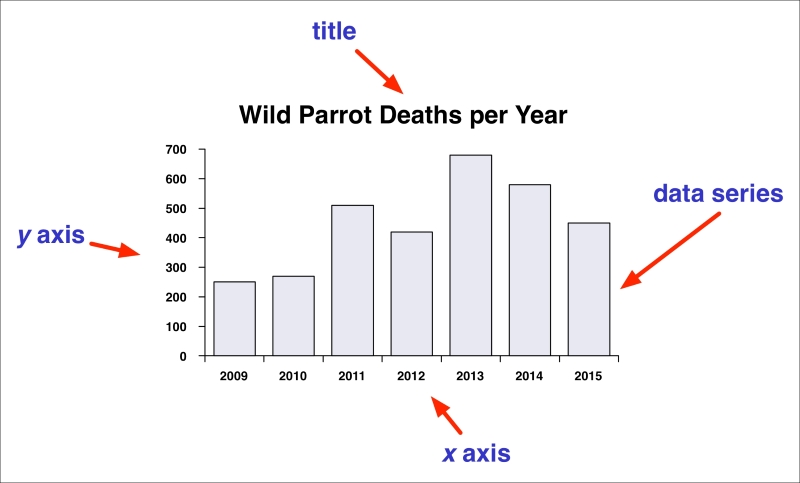When you look at a chart like the one shown in the previous section, you can identify a number of standard elements that are used by all types of charts. These elements include a title, the x and y axes, and one or more data series:

To use the Charter package, a programmer would create a new chart and set the title, the x and y axes, and the data series to be displayed. The programmer would then ask Charter to generate the chart, saving the result as an image file on disk. By combining and configuring the various elements in this way, a programmer can create any chart that they may wish to generate.
Note
A more sophisticated charting library would allow for additional elements, such as a y axis on the right-hand side, axis labels, a legend, and multiple overlapping data series. For Charter, however, we want to keep the code simple, so we will ignore these more complicated elements.
Let's take a closer look at how a programmer might interact with the Charter library, and then...



